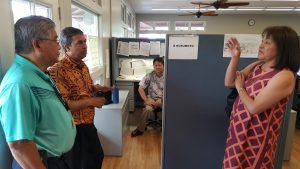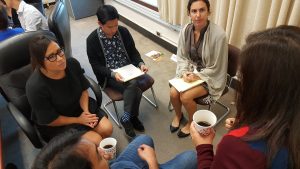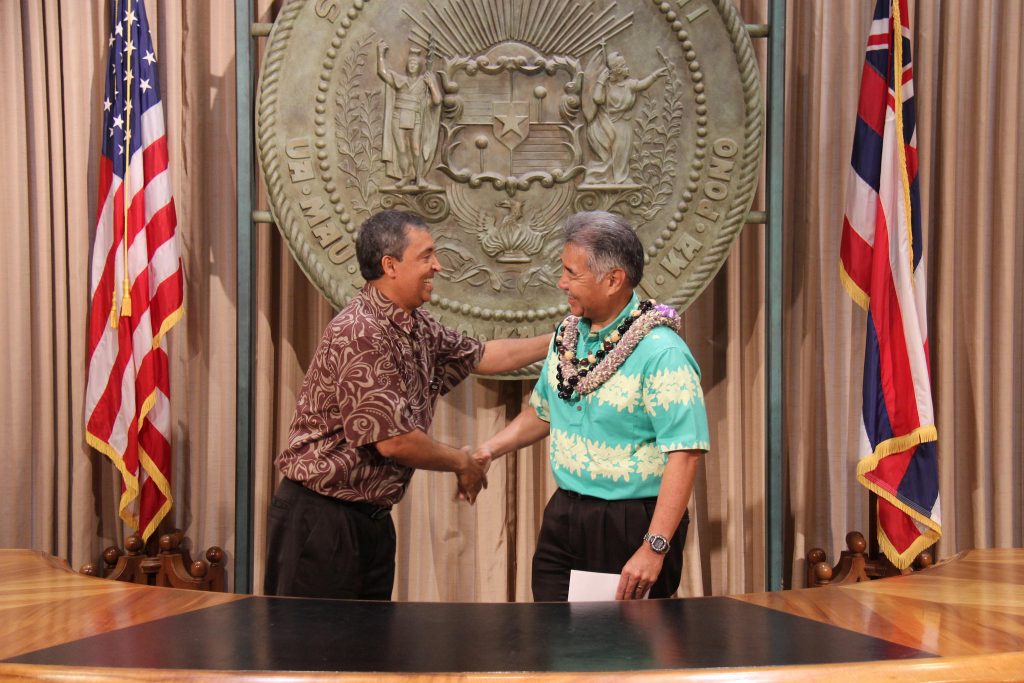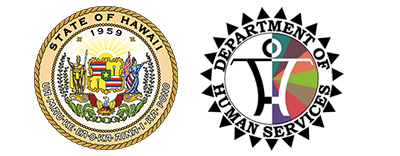Strategic Intentions: A Golden Opportunity
Posted on Aug 22, 2017 in MainWhether through provision of DHS benefits, programs, and services or the support provided to the divisions and agencies that deliver them, our collective commitment is the same: to improve the well-being of Hawai‘i’s families. Our implementation of ‘Ohana Nui aims to make strategic, intentional changes that enable us to reach our commitment even more effectively. ‘Ohana Nui is based on national data and best practices that a multigenerational philosophy of service delivery is more effective than one that separately addresses individuals’ needs. This column will bring you strategies, success stories, and regular updates as we work across the department to intentionally create better outcomes for Hawai‘i through ‘Ohana Nui. [/su_box]
A golden opportunity. We use this phrase to refer to a point in time where many independent factors converge to create a unique, ideal situation that we must act upon immediately. By definition, a golden opportunity presents a fleeting window of time which must be embraced as we assume these factors will not remain aligned forever.
It’s this phrase – a golden opportunity – that comes to mind when I think about where we are as a department and a state as we put ‘Ohana Nui into operation. The timing couldn’t be better.
We are at a time where our past, our present and our future are converging to present a unique opportunity to operationalize our multi-generational approach, called ‘Ohana Nui.

Many of our staff know intuitively how the individuals and families they serve touch more than one division. Here team members from Med-QUEST, Child Welfare Services and the Director’s Office talk story in Hilo.
Our ability to capitalize on this golden opportunity stands firmly in the foundation previous leadership and our own team has laid.
We recognize that so many of our team members already understand that success for the people we serve depends on the success of their families and communities. This is a cornerstone in our foundation for embedding ‘Ohana Nui in the Department of Human Services (DHS).
At the leadership level, a shift began when former DHS Director Rachael Wong recast the image of DHS as a “trampoline” that works concurrently to springboard individuals and families toward well-being. She believed we must address the social determinants of health (or the root causes of poverty) to be that effective springboard for the families and individuals we serve. She shared this vision with the Governor, the Legislature and DHS division leadership. From there, a seed was planted and a movement began.

Leadership from across the department gathered almost a year ago to begin the implementation process.
Into the present and over the last year, DHS leadership has assumed an active role and developed a multi-year plan. We identified “change agents” throughout the department. We gather regularly to implement our plan. We shared these changes with internal stakeholders and community partners. And, we all agree that we need to create a more effective delivery system that helps our individuals and families succeed regardless of their ability to navigate the complex system of human services.
We have also begun to identify “pilot projects” that would serve as proof of the ‘Ohana Nui concept, which could then be replicated throughout the department. Eventually, all aspects of the department – its programs, services, processes, policies, procurement, and most important, our people – would be applying ‘Ohana Nui principles. It would, in effect, become the way we do all of our work.
A few other states, more counties and many programs across the country are working to implement a similar multi-generational approach, 2-Gen as it’s called on the Continent. A unique advantage Hawai‘i has is that we are a state-wide, centrally supervised and administered system, giving us both the reach and flexibility to, in one fell swoop, influence one in four adults and half of Hawaii’s keiki. At the same time, each of us working toward this shared goal knows that there are systemic challenges we face, from federal funding streams to regulations against sharing data. Hawai‘i DHS too understands unique barriers – like our department organization contributing to silos of divisions.

DHS Director Pankaj Bhanot (left) and Governor Ige (right) share a moment at the start of Dir. Bhanot’s leadership.
And still, in light of these barriers, we can see a golden opportunity in the future ahead of us. It is no coincidence that our own director, Pankaj Bhanot, is the most senior human services professional in the country. He is regularly consulted by members of the national administration (from both sides of the aisle) and professional organizations for his opinion, strategy and recommendations on programs, services and funding. Likewise, our Med-QUEST Division administrator, Dr. Judy Mohr Peterson, is now the board president of the National Association of Medicaid Directors. And finally, Governor Ige is the vice chair of the Western Region of Governors. Hawai‘i’s team is poised to influence policy at a national level while changing our systems here at home.
These converging factors – our history in serving families, our shift to focus on the social determinants of health, our planning and implementation over the last year, our leadership, and you, our dedicated team – make this an exciting time for DHS. Let us seize this golden opportunity together for ‘Ohana Nui.
Note: Strategic Intention is a regular column featuring proven strategies, real stories and meaningful successes resulting from the application of ‘Ohana Nui to the good work being done by DHS teams. For questions, comments or to share your team’s ‘Ohana Nui outcomes, please contact Kimberly Miyazawa Frank at [email protected].
